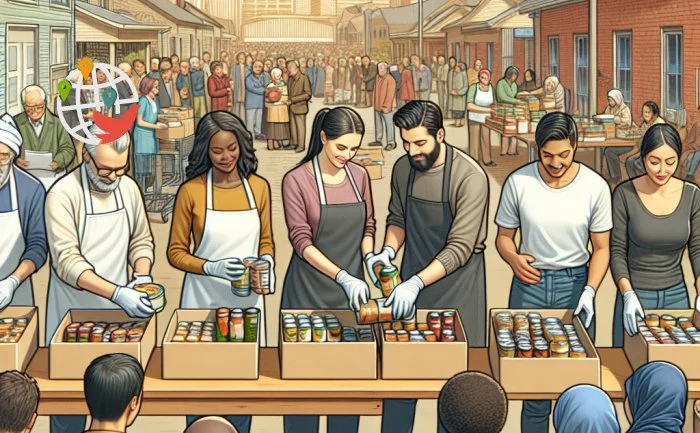Food Banks Canada: Support for Residents and Newcomers

How food assistance programs support vulnerable groups.
Food banks play a crucial role in supporting those in need across Canada, especially as the cost of living and inflation rise. According to data, food bank usage increased by 32% in 2023 compared to 2022, reflecting Canadians' growing need for support. Many people, regardless of income level, find themselves needing to get food through food banks, which shows how widespread food insecurity has become. This support system is relevant for both newcomers and Canadian citizens facing financial difficulties.
How Food Banks Work in Canada
There are thousands of food banks in Canada, operating with the support of the national organization Food Banks Canada. This organization coordinates the work of 10 provincial associations and over 4,750 food assistance organizations across the country. These food banks are located in various places in each community and can be found through an online locator on the Food Banks Canada website. This gives people access to information about food bank locations and their hours of operation.
Where Food Banks Get Their Food
The food distributed at food banks comes from several sources. The main ones are donations from the public and businesses. Donations are especially active during holidays when many stores and companies organize food drives for food banks. Additionally, local companies and farmers donate unsold goods or surplus. These resources are then distributed to those in need.
How to Get Help from a Food Bank
The process of using a food bank is relatively simple. You need to fill out a form providing the following information:
- number of family members;
- annual family income;
- expenses.
You usually also need to provide ID and proof of address. This information helps food banks assess family needs and ensure an adequate amount of food.
Who Uses Food Banks
Among food bank users, the following statistics are observed:
- 33% — children;
- 43.8% — single adults;
- 42.4% — recipients of government support;
- 8% — elderly people;
- 13.6% — disability benefit recipients;
- 1 in 10 receives pension income;
- 1 in 6 is employed;
- 12% — Indigenous people.
Main Reasons for the Increase in Food Bank Users
One of the key reasons for the increase in food bank users is the rising cost of living in Canada. In recent years, inflation and higher prices for housing and food have forced many families to seek help from food banks.
It's important to note that food banks are not only used by people with low incomes. Even those in higher income groups have had to adjust their finances due to rising expenses. In such conditions, food banks become a temporary support measure, allowing people to meet their basic needs.
Best Donations for Food Banks

This weekend Canada switches to winter time

A new era for Canadian athletes

Canada celebrates its National Day and reflec...

Rising inflation in May threatens rate cuts i...

Canada Prepares for a Sharp Increase in the E...

High Auto Insurance Rates for Immigrants Spar...

Canadian intelligence raises alarm: China's i...

Canada continues to attract skilled professio...

How the food supply chain in Canada works and...

The mysterious disappearance of a taxidermy g...

The remains of a mysterious ship have been fo...

Saskatchewan raises age limit for tobacco pur...
Although food banks need products year-round, certain items are especially in demand as they are often in short supply. The following products are particularly needed:
- canned proteins (fish, meat);
- canned fruits and vegetables;
- whole grain rice and pasta;
- pasta sauces;
- healthy canned soups;
- baby food and formula;
- fresh produce;
- diapers;
- cereals.
It's also helpful to donate items like can openers and other utensils needed to use food bank products.
Food banks remain a vital part of Canadian society, helping many families cope with food insecurity in challenging economic conditions. While this is a temporary support measure, it helps many families secure necessary nutrition. It's important to remember that the main goal for newcomers and those facing financial difficulties should remain finding employment as soon as possible and improving their financial situation.

















